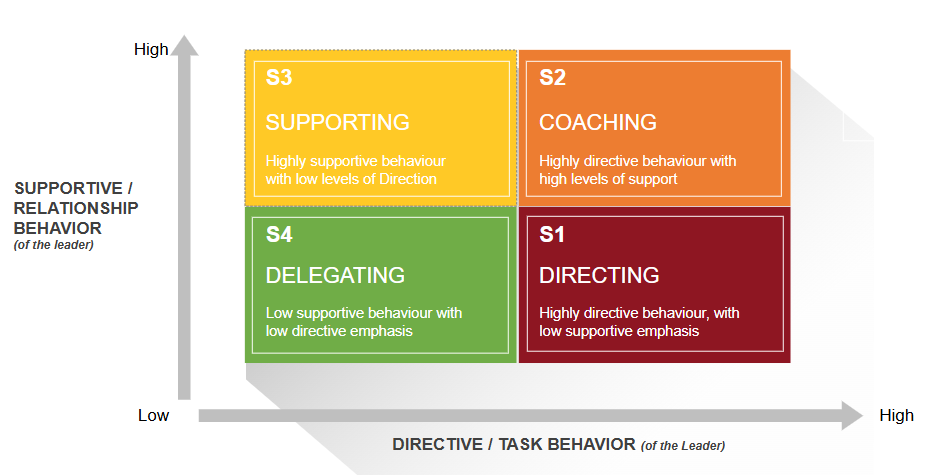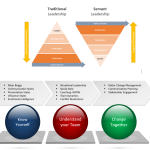Adapting Leadership for Success
Adapting Leadership for Success: The Power of Situational Leadership
Effective leadership is not a one-size-fits-all approach. Successful leaders understand that different situations require different leadership styles. This is where Situational Leadership comes in—a dynamic framework that helps leaders adapt their approach based on their team’s needs and competencies.
What is Situational Leadership?
Situational Leadership is a model developed by Paul Hersey, Ken Blanchard, and Dewey Johnson that emphasises the importance of adaptability in leadership. It is based on the principle that there is no single best way to lead; instead, leaders must assess the competence and confidence levels of their team members and adjust their leadership style accordingly.
The model identifies four primary leadership styles that leaders can use depending on the situation:

- Directing (S1) – High direction, low support
- Used when employees have low competence and low confidence
- The leader provides clear instructions and closely monitors tasks
- Best suited for new employees or those unfamiliar with the task
- It looks like “First do this, next do this” and then feedback on the task, what’s working what to improve
- Coaching (S2) – High direction, high support
- Applied when employees have low competence and confidence is increasing with some experience
- The leader provides both direction and encouragement to build competence. It transitions to a 2 way conversation with the leader teasing out thought process of employee to further understanding. Questions such as “What do think occurred” and “How do you find the task” are examples of open questions the leader starts to use.
- Ideal for individuals who are enthusiastic but require guidance
- Supporting (S3) – Low direction, high support
- Used when employees have high competence but low confidence
- An employee may have had a once off error for example and rather than direct the person to a solution, your role as leader is to check in and ask what support you can provide. No one wants to be retrained on a task they are well able to perform when it may be a human error due to distraction for example is the issue.
- The leader facilitates and supports rather than directs
- Best for team members who know their tasks but need motivation or reassurance
- Delegating (S4) – Low direction, low support
- Applied when employees have high competence and high confidence
- The leader entrusts responsibility, empowering the individual to make decisions
- In this case the leader is providing the direction and trusting in the employees abilities to complete the scope of work. The leader agrees with the employee what support they would like, for example a monthly check in, and work with the employee in this way.
- Most suitable for experienced, self-sufficient employees
Why Situational Leadership Matters
A leader’s ability to assess, adapt, and act is critical in today’s fast-paced business world. Situational Leadership ensures that leaders:
- Empower employees by providing the right level of guidance
- Enhance team performance by tailoring their approach to each individual’s development level
- Boost morale and engagement by recognising and responding to team members’ needs
- Build a resilient workforce by fostering independence and confidence in employees
- Ensures good quality conversations are happening real time with employees.
The Role of Personality in Leadership Adaptability
Every leader has a natural leadership style influenced by their personality. However, effective leaders learn to flex their style to meet the needs of their team. Understanding one’s personality preferences—such as being introverted or extroverted, thinking versus feeling, or structured versus flexible—helps in making conscious adjustments when applying Situational Leadership. Be mindful of your natural situational leadership style as you may unconsciously go to this style which may not be appropriate for your employees current situation.
Applying Situational Leadership in Practice
To implement Situational Leadership effectively:
- Assess the individual or team – Identify their competence and confidence levels.
- Determine the appropriate leadership style – Match your approach to the specific situation.
- Adjust as needed – Leadership is an ongoing process that requires constant evaluation and adaptation.
- Communicate effectively – Ensure that expectations and support mechanisms are clear.
Final Thoughts
Leadership is about influence, and the best leaders recognise that their influence is most effective when they adapt to the needs of their team. By leveraging Situational Leadership, leaders can develop high-performing teams, foster a culture of trust, and drive long-term success. Whether you’re leading a project, coaching an employee, or managing change, being adaptable is key to inspiring and empowering others.
Ready to elevate your leadership skills? Learn more about our Leadership Development Programme.



